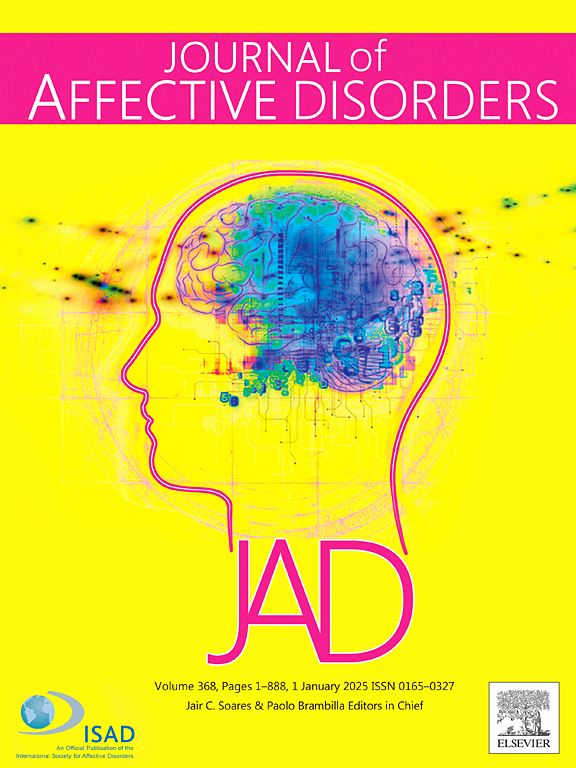Large-scale digital phenotyping: Identifying depression and anxiety indicators in a general UK population with over 10,000 participants
IF 4.9
2区 医学
Q1 CLINICAL NEUROLOGY
引用次数: 0
Abstract
Background
Digital phenotyping offers a novel and cost-efficient approach for managing depression and anxiety. Previous studies, often limited to small-to-medium or specific populations, may lack generalizability.
Methods
We conducted a cross-sectional analysis of data from 10,129 participants recruited from a UK-based general population between June 2020 and August 2022. Participants shared wearable (Fitbit) data and self-reported questionnaires on depression, anxiety, and mood via a study app. We examined correlations between mental health scores and wearable-derived features, demographics, health variables, and mood assessments. Unsupervised clustering was used to identify behavioural patterns associated with depression and anxiety. Furthermore, we employed XGBoost machine learning models to predict depression and anxiety severity and compared the performance using different subsets of features.
Results
We observed significant associations between the severity of depression and anxiety with several factors, including mood, age, gender, BMI, sleep patterns, physical activity, and heart rate. Clustering analysis revealed that participants simultaneously exhibiting lower physical activity levels and higher heart rates reported more severe symptoms. Prediction models incorporating all types of variables achieved the best performance (R2 = 0.41, MAE = 3.42 for depression; R2 = 0.31, MAE = 3.50 for anxiety) compared to those using subsets of variables. Several wearable-derived features were observed to have non-linear relationships with depression and anxiety in the prediction models.
Limitations
Data collection during the COVID-19 pandemic may introduce biases.
Conclusion
This study identified several indicators for depression and anxiety and highlighted the potential of digital phenotyping and machine learning technologies for rapid screening of mental disorders in general populations.
求助全文
约1分钟内获得全文
求助全文
来源期刊

Journal of affective disorders
医学-精神病学
CiteScore
10.90
自引率
6.10%
发文量
1319
审稿时长
9.3 weeks
期刊介绍:
The Journal of Affective Disorders publishes papers concerned with affective disorders in the widest sense: depression, mania, mood spectrum, emotions and personality, anxiety and stress. It is interdisciplinary and aims to bring together different approaches for a diverse readership. Top quality papers will be accepted dealing with any aspect of affective disorders, including neuroimaging, cognitive neurosciences, genetics, molecular biology, experimental and clinical neurosciences, pharmacology, neuroimmunoendocrinology, intervention and treatment trials.
 求助内容:
求助内容: 应助结果提醒方式:
应助结果提醒方式:


